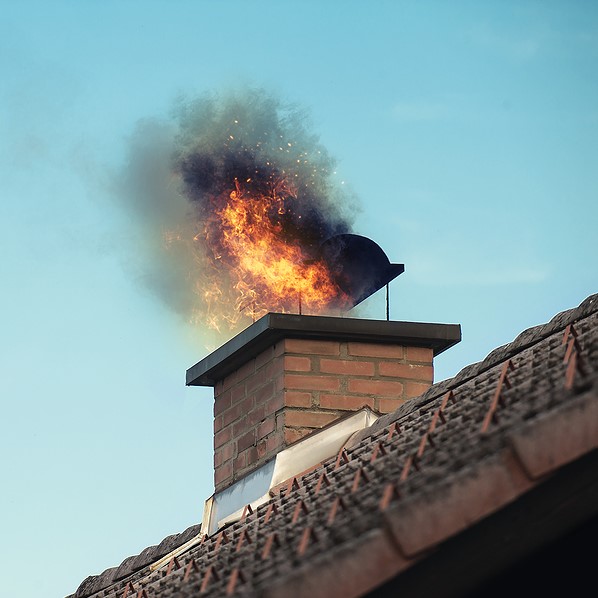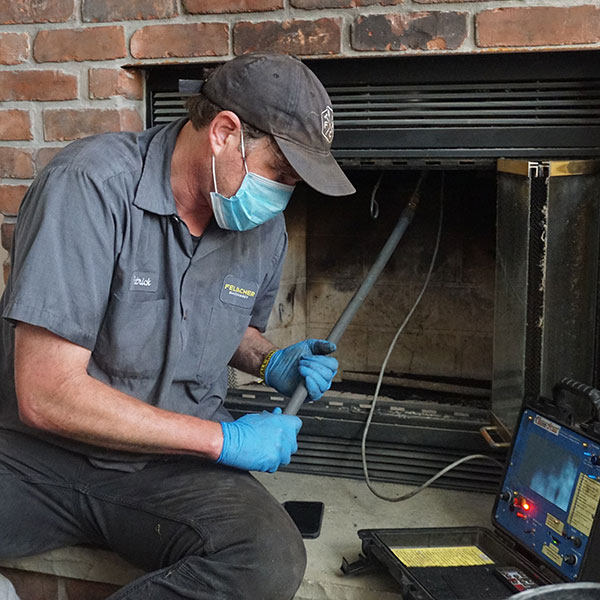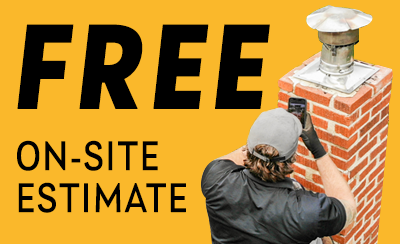The Damaging Effect of Chimney Fires

When you think of a “chimney fire,” you’re probably thinking of a big, blazing event – the kind that brings neighbors running over and saying, “Hey, did you know your chimney’s on fire?” But that’s just one kind of chimney fire. Smaller fires that nobody knows about happen more often than you might realize, and they can start a cycle of serious damage within your chimney system.
3 things a chimney fire can do to your chimney
- Damage to the chimney liner: Any fire in the chimney, no matter how small and brief, can start to damage your clay, steel or poured-in-place chimney liner. A broken liner will allow intense heat to come into contact with the interior masonry and possibly with vulnerable building materials of your house.
- Brick damage: Once your liner is damaged, fires get to work on the bricks and mortar of your chimney. Fires can cause cracks and decay that allow water into the system, which may lead to widespread damage and make the system structurally unsound.
- Flue gases: Depending on how damaged your liner and chimney masonry is and where the damage is located, toxic gases including carbon monoxide may begin seeping into the air of your home. Carbon monoxide is of particular concern because it is invisible and odorless but potentially fatal once in the bloodstream of a person or animal.
The issues above are related to minor or moderate chimney fires that often go unnoticed. As you can imagine, a full-on fire can be devastating beyond description.
What causes chimney fires?
The primary cause of most chimney fires in the U.S. each year is creosote, which ignites within the flue or smoke chamber. Creosote is formed whenever wood burns. It can be present as a sticky, flakey, puffy or solid substance and is highly flammable.
The only way to deal with creosote is to have your chimney professionally cleaned once a year by a CSIA-certified chimney sweep. This work alone will dramatically decrease the chance of a chimney fire.
Spotting the signs of a chimney fire
An active small or moderate chimney fire often gives you a few clues including:
- A strange clicking or tapping sound coming from the chimney/fireplace
- Large amounts of dark, dense smoke exiting from either end of the system
- A rumbling sound similar to a train in the distance
If you notice any of these signs, call 911 and put out the fire in the fireplace if it’s safe to do so.
 After a known or suspected fire
After a known or suspected fire
Once the fire is put out and everybody is safe, your next step should be to arrange for a licensed chimney inspection. Your inspector will look closely at all potentially affected areas of your chimney, fireplace and adjacent parts of your home and will then advise you on what, if any, repairs need to be made.
Certain types of chimney inspections involve video imaging down within the flue to give the inspector an accurate view of the state of your chimney liner and/or interior masonry.
Along with annual chimney sweep services, an annual inspection is a great way to keep your chimney and fireplace safe and efficient and to cut down on major repair costs for problems that were never addressed in their early stages.
Felgemacher Masonry & Chimney serves the entire Buffalo, NY, and Rochester, NY, regions with CSIA-certified chimney sweeping, chimney inspections and chimney repair and rebuilding work. We’re your chimney’s best friend whenever it needs help. Learn more about our services, or schedule an appointment at (716) 907-4914.



